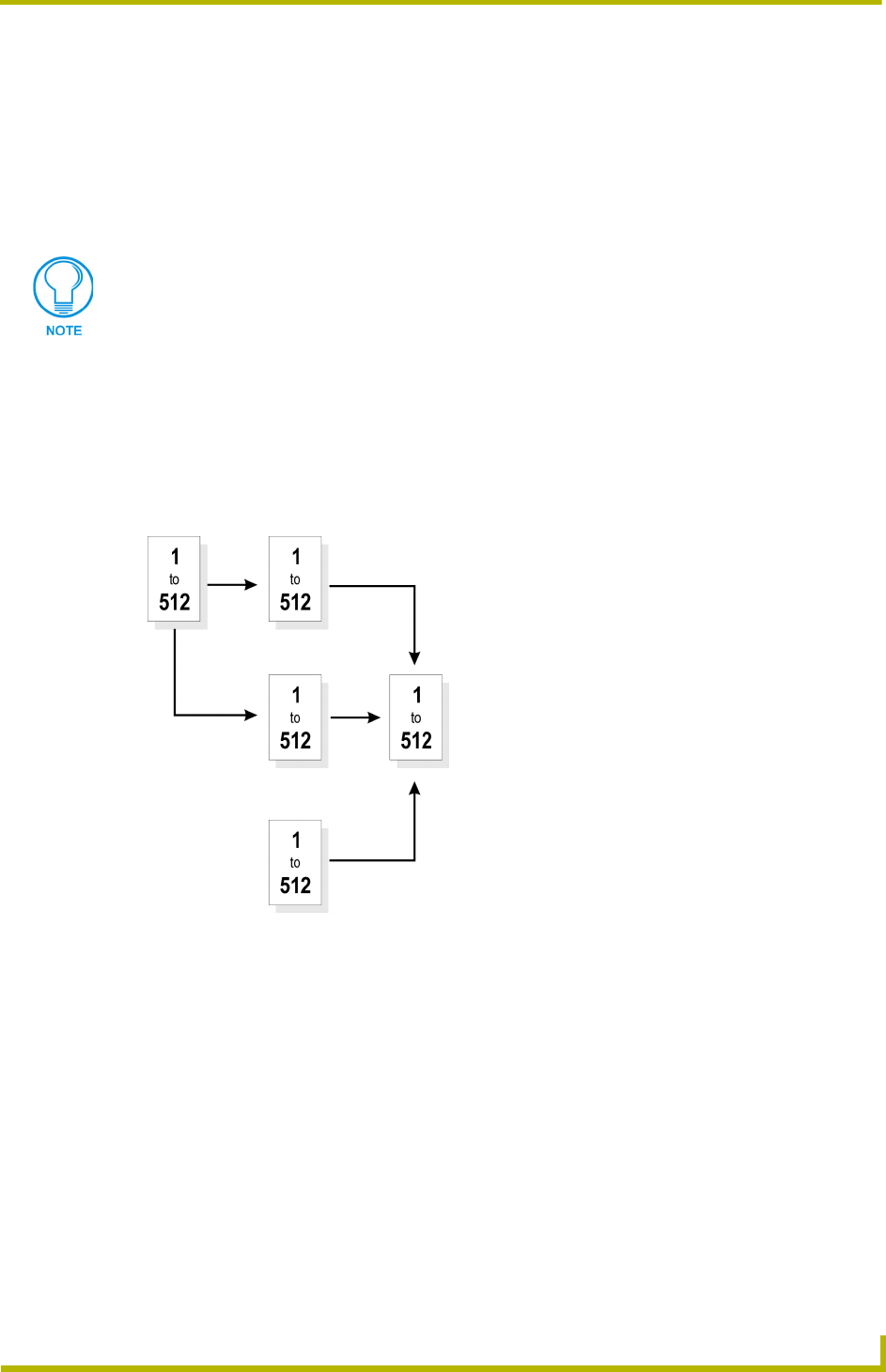User Guide
Table Of Contents

Programming
9
A
XB-DMX512 DMX512 Interface
Programming
The AXB-DMX512 is controlled with Axcess Send_Commands. Use the programming
information in this section along with the Axcess Programming Language Instruction Manual to
program the AXB-DMX512.
Buffers
The AXB-DMX512 uses a “highest value takes precedence” to determine which DMX value is
actually output (see FIG. 9). There are three output buffers: patch, group, and direct control. Each
buffer represents all 512 DMX outputs. The highest value in any buffer is the value transmitted
from the output port. The actual DMX output refers to the value being transmitted.
The levels in the patch buffer are modified by DMX Input. The patch buffer commands determine
which, if any, DMX inputs modify the level of the patch buffer. A patch disconnect automatically
clears the value in the patch buffer to zero. If there is no DMX Input for 5 seconds, all values in
DMX Input buffer are set to zero. Any outputs tied those DMX Inputs will then be zero.
The group buffer is modified by changing group commands. Groups can ramp over time. Groups
can be tied to Axcess levels or DMX Inputs. The groups can be absolute or proportional. For groups
that are absolute, the value of all outputs are the same as the group level. Proportional group outputs
depend on a specified value or the Actual DMX output at the time the output is added to the group.
That value sets the maximum value the outputs can reach when controlled by group 55.
The direct control buffer is modified by individual output ramps or by preset recalls. Presets are
also called snapshots or scenes.
All Send Commands are limited to 64 characters.
FIG. 9 DMX Flow Chart
DMX Input
Patch Buffer
Group Buffer
Direct Control Buffer
Actual DMX Output
The highest value of any buffer










